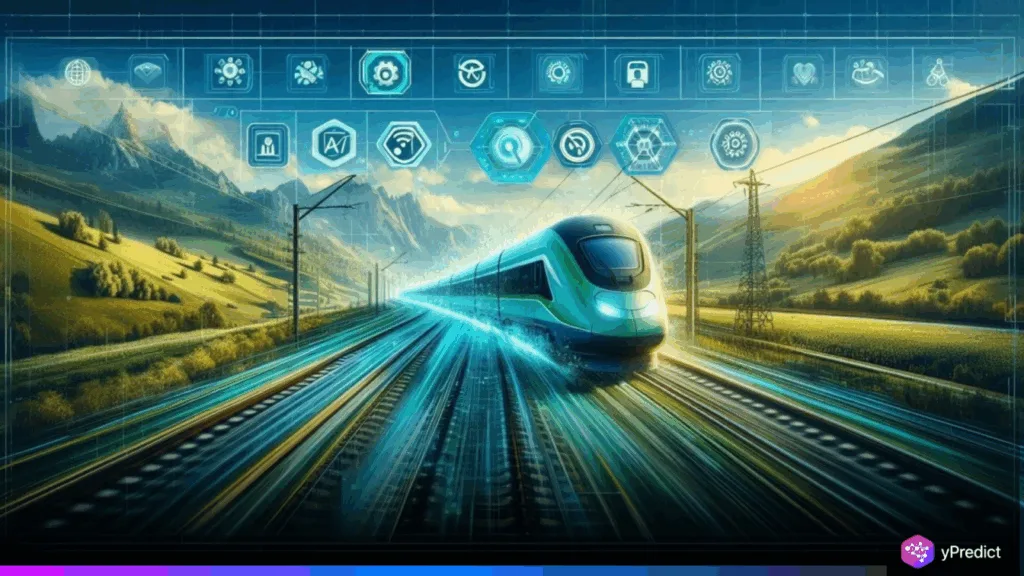
Jammu & Kashmir’s railway network is undergoing a major transformation through the use of AI-powered systems and advanced maintenance machinery. With the full operation of the Jammu–Baramulla rail line in June 2025. The region is expected to see a 4-hour reduction in travel time and improved safety standards. Studies suggest technologies like tamping and ballast cleaning machines may reduce derailments by 30%. While AI defect detection tools now achieve nearly 99% accuracy. These upgrades include modernized DEMU and MEMU coaches. Position the region as a national model for safe, efficient, and tech-driven rail infrastructure.
Advanced Maintenance Technology Enhances Track Stability and Safety
Indian Railways has implemented modern tamping and ballast cleaning equipment. This allows for dealing with the terrain conditions and seismic dangers present in Jammu & Kashmir. Such machines, particularly those of Plasser & Theurer, will compact ballast under sleepers and clean ballast wash to stabilize the track. According to the research of 2023 in the International Journal of Rail Transportation. This type of machinery may prevent 30 percent of derailments and provide a significant moment of safety.
Particularly, the technology has an effect in areas such as the Chenab Valley. Where there are structures that have to withstand high geological pressure. Besides, Indian Railways will introduce dozens of new ballast machines with the ability to re-tamp multi-sleeper ballast. Our nighttime maintenance and the 24-hour deployment mean that our service disruption is low. This also facilitates long-term track alignment and drainage. This modernization is crucial in ensuring the integrity of the Jammu-Baramulla line. That incorporates the highest bridge in the world, the Chenab Bridge. As the number of passengers and freight is increasing, this kind of automation is turning mundane maintenance into a data-dependent process with high technology.
AI-Based Inspection Systems Boost Predictive Maintenance Accuracy
In addition to the upgrades of hardware upgrades, Indian Railways is employing game-changing AI in ensuring railway safety and efficiency. Real-time defects (such as cracked wheels, loose bolts, and hot axles) are spotted with the help of technologies such as Machine Vision-Based Inspection Systems (MVIS) that have been co-created with IISc Bengaluru. According to research conducted by Akridata in 2025, the model detected wheel cracks with an accuracy rate of 98.5 percent, and this increased predictive maintenance capabilities by a considerable margin.
Such AI systems supplement the current process of modernization. To give an example, coaches in the Kashmir Valley are being upgraded in the Lucknow Workshop, into which DEMU and MEMU trains have been fitted with GPS-based information systems and control systems using Ethernet. AI can be uploaded in CCTV systems and fire detection so that potential failures are monitored more adequately and faster. A 2024 report by ScienceDirect has reported 97.14 percent accuracy of detecting fastener defects through deep learning, a further verification that inspections with AI-based methods are gaining traction.
Jammu & Kashmir’s Railways Set National Standard for Safety
The Jammu & Kashmir railway modernizes and also integrates modern technology in the form of state-of-the-art machinery and AI, and smart coaches to create a future generation transportation system. Whether it is tamping machines that are minimizing derailments via the segregation of rail joints or the implementation of AI in detecting micro-defects on tracks, the area is demonstrating how technology can revolutionize the sphere of railway safety. As the Jammu to Baramulla line is functioning at full capacity, the travel is not only faster but also safer and more comfortable.






